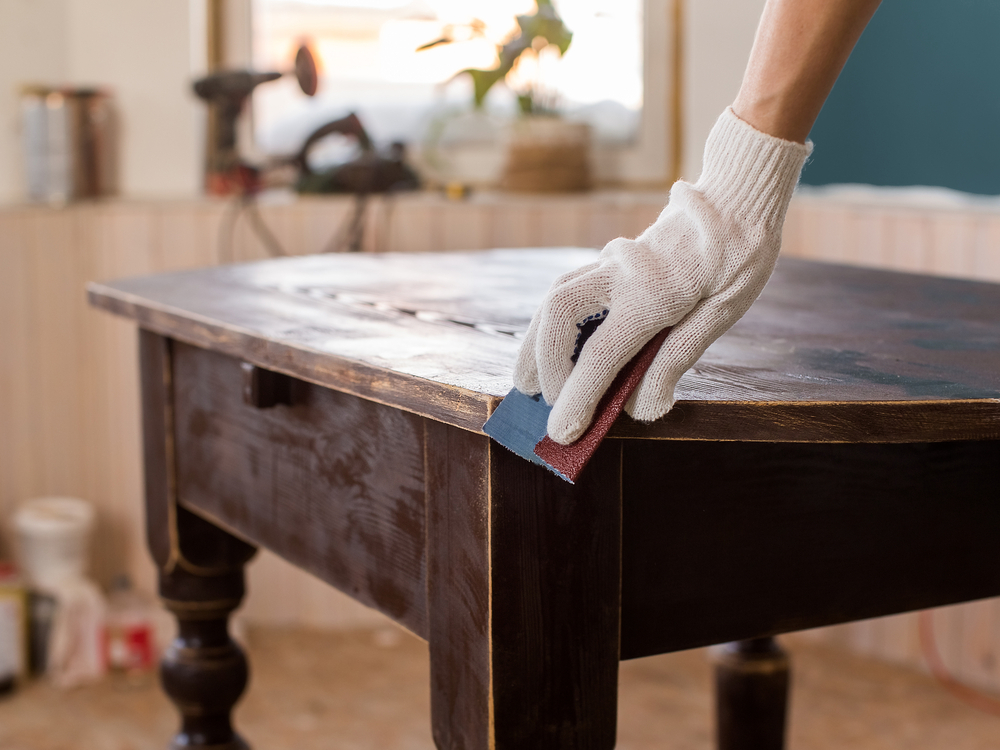Removing stain from wood can be an important step in refinishing or repairing wood surfaces. Whether you want to change the color of the wood, remove a poorly applied or faded stain, or simply prepare the wood for a new finish, there are several methods you can use to remove the stain.
Some common methods for removing stain from wood include sanding, using chemical strippers, and bleaching. Each method has its own advantages and disadvantages, and the right method for you will depend on the specific needs of your project and your personal preferences.
Contents
Preparing the wood for stain removal
Before you begin removing the stain from the wood, it is important to properly prepare the surface. This will help ensure that the stain is removed evenly and that the wood is ready for a new finish.
To prepare the wood for stain removal, follow these steps:
- Sand the wood to remove any rough or uneven spots. Use a medium-grit sandpaper (around 120-grit) and sand in the direction of the grain.
- Wipe the wood down with a damp cloth to remove any dust or debris.
- If the wood has a finish on it, such as varnish or polyurethane, you may need to use a chemical stripper to remove it before you can remove the stain. Follow the manufacturer’s instructions for applying the stripper and be sure to wear protective gloves and goggles.
- Once the wood is sanded and cleaned, it is ready for the stain to be removed.
Removing the stain
- There are several methods you can use to remove the stain from the wood. Here are some common options:
- Sanding: Sanding is a simple and effective way to remove stain from wood, but it can be time-consuming and may remove some of the wood’s natural texture. To remove the stain using sanding, start with a medium-grit sandpaper (around 120-grit) and sand in the direction of the grain. Once you have removed the majority of the stain, switch to a fine-grit sandpaper (around 220-grit) to smooth out the surface.
- Chemical strippers: Chemical strippers are a powerful and effective way to remove stain from wood, but they can be harsh and may release harmful fumes. To use a chemical stripper, follow the manufacturer’s instructions for applying the product and be sure to wear protective gloves and goggles. Once the stripper has had time to work (usually around 20-30 minutes), use a scraper or putty knife to remove the loosened stain, and then wipe the surface clean with a damp cloth.
- Bleaching: Bleaching is a good option for removing stain from wood that has become discolored or uneven.
- There are several types of bleach available, including chlorine bleach, oxalic acid bleach, and hydrogen peroxide bleach. Follow the manufacturer’s instructions for applying the bleach and be sure to wear protective gloves and goggles. Once the bleach has had time to work (usually around 15-30 minutes), rinse the wood with water and allow it to dry completely before refinishing.
Finishing the wood
- Once the stain has been removed, the wood is ready to be finished. Here are some steps to follow for a professional-looking finish:
- Sand the wood again using a fine-grit sandpaper (around 220-grit) to smooth out any rough spots and remove any remaining residue from the stain removal process.
- Wipe the wood down with a damp cloth to remove any dust or debris.
- If the wood is unfinished, you can apply a new coat of stain
Types of Wood Stain Stripper
There are several different types of wood stain stripper available, and the right one for your project will depend on the specific needs of your wood and your personal preferences. Here is a brief overview of some common types of wood stain stripper:
- Chemical strippers: Chemical strippers are a powerful and effective way to remove stain from wood, but they can be harsh and may release harmful fumes. There are several types of chemical strippers available, including water-based and oil-based formulas. Water-based strippers are generally safer and easier to clean up, but they may not be as effective as oil-based strippers on certain types of wood. Oil-based strippers are more powerful and may be a good choice for removing tough, stubborn stains, but they can be messier and may require the use of paint thinner for cleanup.
- Gel strippers: Gel strippers are a thicker, more viscous form of chemical stripper that is ideal for vertical surfaces or for removing stain from intricate or hard-to-reach areas. Gel strippers are typically oil-based and may be a good choice for removing tough, stubborn stains.
- Paste strippers: Paste strippers are a thicker, more heavy-duty form of chemical stripper that is ideal for removing multiple layers of stain or for removing tough, stubborn stains. Paste strippers are typically oil-based and may require the use of paint thinner for cleanup.
- Soy-based strippers: Soy-based strippers are a more environmentally friendly alternative to traditional chemical strippers. They are made from soybeans and other natural ingredients and are biodegradable, making them a good choice for those who are looking for a more eco-friendly option. Soy-based strippers are typically water-based and may not be as effective as oil-based strippers on certain types of wood.
Conclusion
Removing stain from wood can be an important step in refinishing or repairing wood surfaces. There are several methods you can use to remove the stain, including sanding, using chemical strippers, and bleaching. Each method has its own advantages and disadvantages, and the right method for you will depend on the specific needs of your project and your personal preferences.
Once the stain has been removed, be sure to properly prepare the wood and finish it with a new coat of stain or paint to achieve a professional-looking result. Whether you are looking to change the color of the wood, remove a poorly applied or faded stain, or simply prepare the wood for a new finish, following these steps will help you achieve the best results when removing stain from wood.

